APAH: Unit 6 - Baroque, Rococo, & Neoclassist Art
1/95
Earn XP
Description and Tags
Name | Mastery | Learn | Test | Matching | Spaced |
|---|
No study sessions yet.
96 Terms
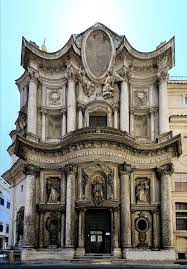
San Carlo alle Quattro Fontane
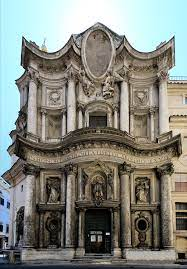
San Carlo alle Quattro Fontane (creator & date)
Francesco Borromini; 1636-1648 CE
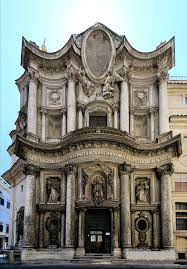
San Carlo alle Quattro Fontane (culture, location, material)
Italian Baroque; Rome, Italy; Brick, stucco, & limestone
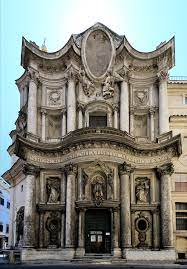
San Carlo alle Quattro Fontane (use & facts)
church
trademarked was interplay of convex & concave forms
Counter-Reformation
2 facades
curves & verticality accentuated by deep niches
sense of movement, light, & dark
broken entablatures, coffers decrease towards the apex
combines movement with architectural form
ovals = dynamic & circles = static (circles in this one)
used complex geometry to create visual metaphor for God
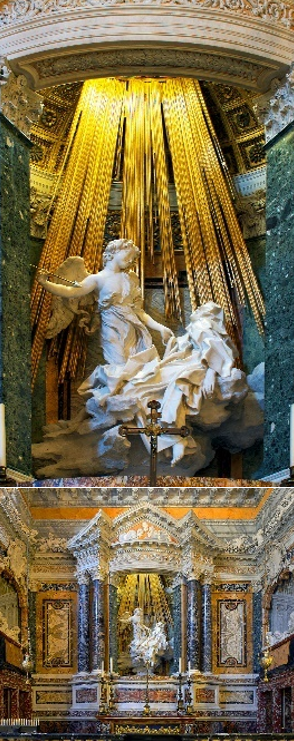
Ecstasy of St. Teresa
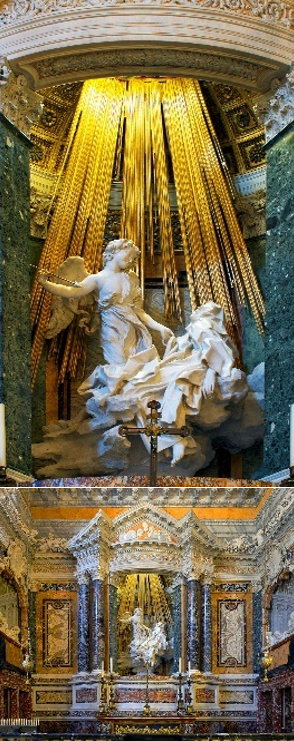
Ecstasy of St. Teresa (creator & date)
Gian Lorenzo Bernini; 1647 CE
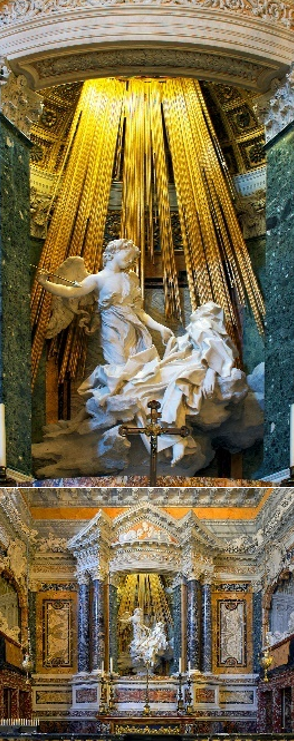
Ecstasy of St. Teresa (culture, location, & material)
Italian Baroque; Rome, Italy; Marble, stucco, gilt, & bronze
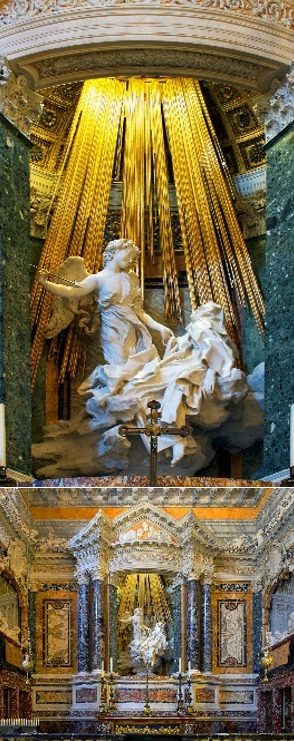
Ecstasy of St. Teresa (use & facts)
Church decor
found in church Santa Maria della Vittoria, patron Frederico Cornaro
designing entire space & context for his art (much like stage set designer)
Bernini designed the sculpture & architectural elements surrounding the piece
hidden window behind pediment for bright & dramatic “celestial light”
utilizing tenebrism in 3d & actual light
carved from single block of marble showing flesh, flowers, cloth, & clouds
interpretation of the diary of the saint – pain & pleasure
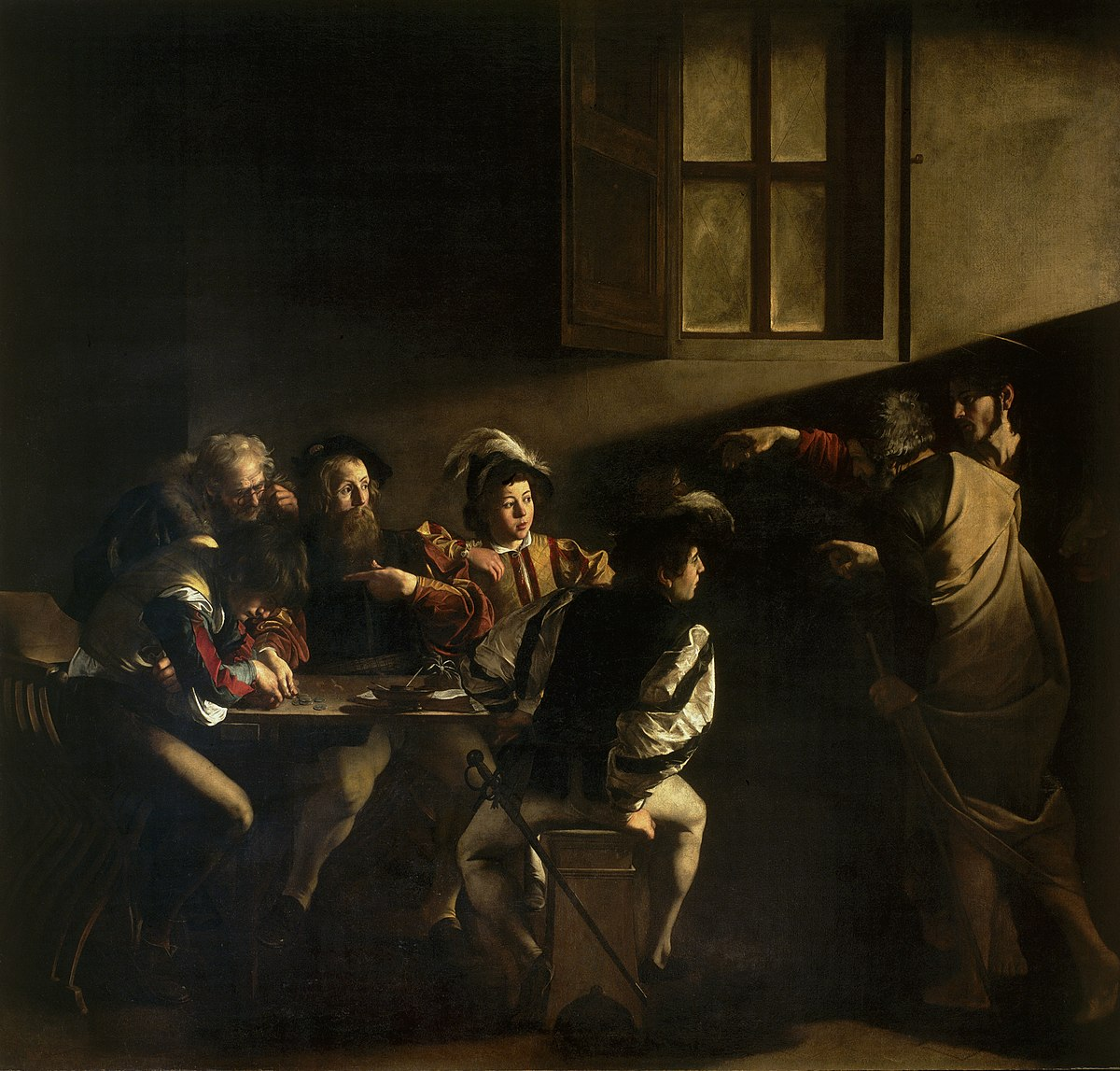
Calling of St. Matthew
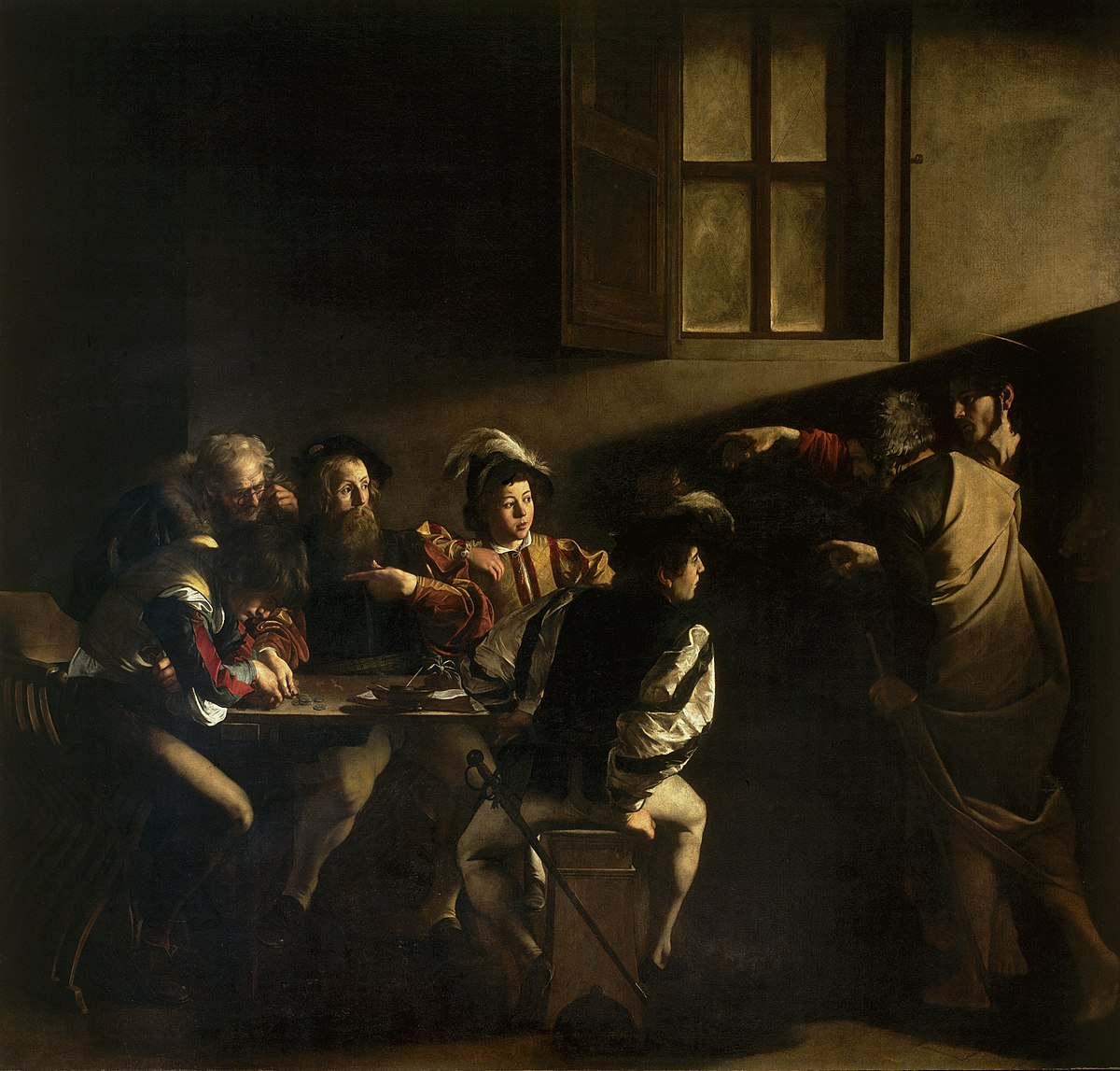
Calling of St. Matthew (creator & date)
Caravaggio; 1599-1600 CE
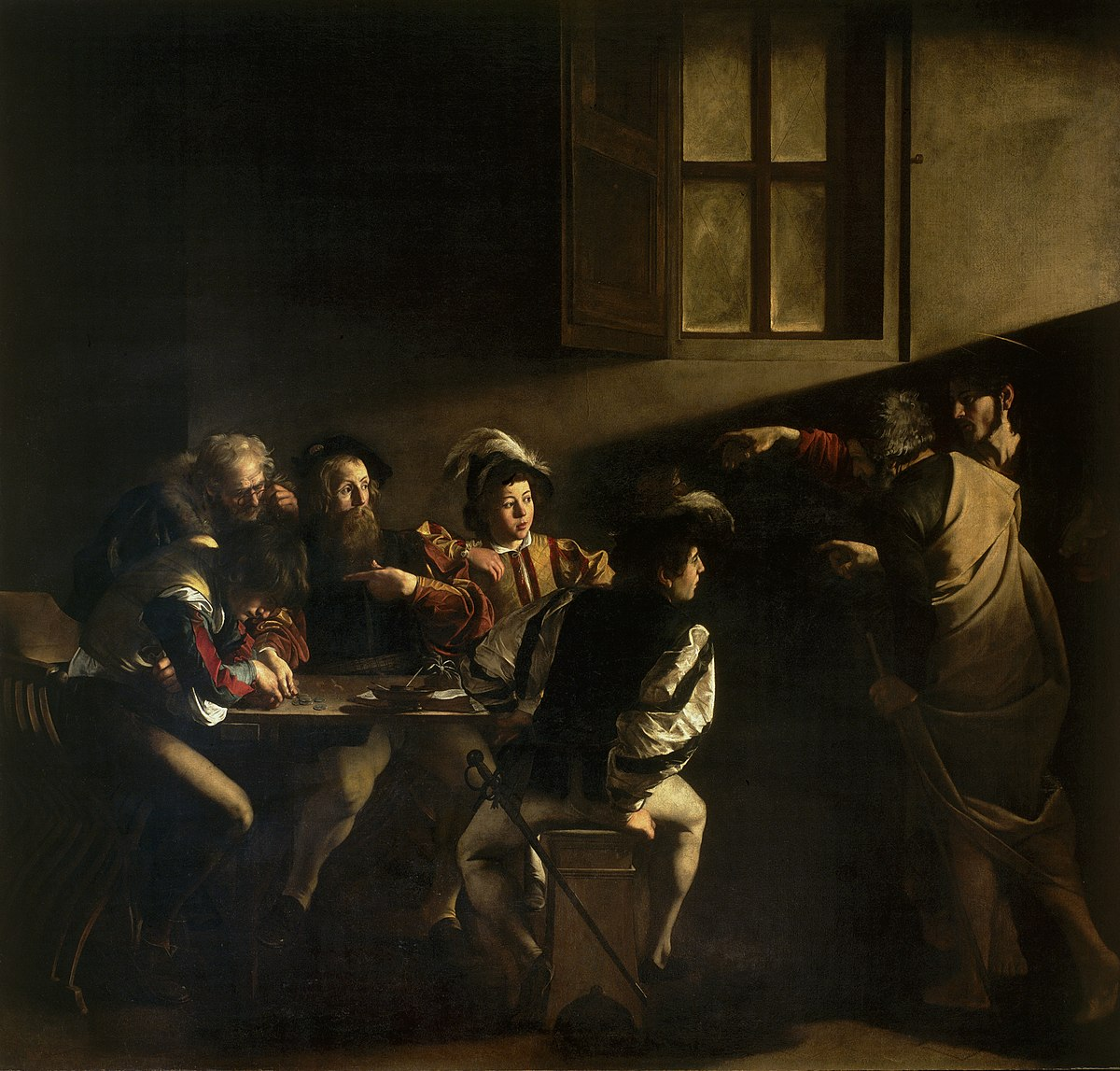
Calling of St. Matthew (culture, location, & material)
Italian Baroque; Rome, Italy; Oil on canvas
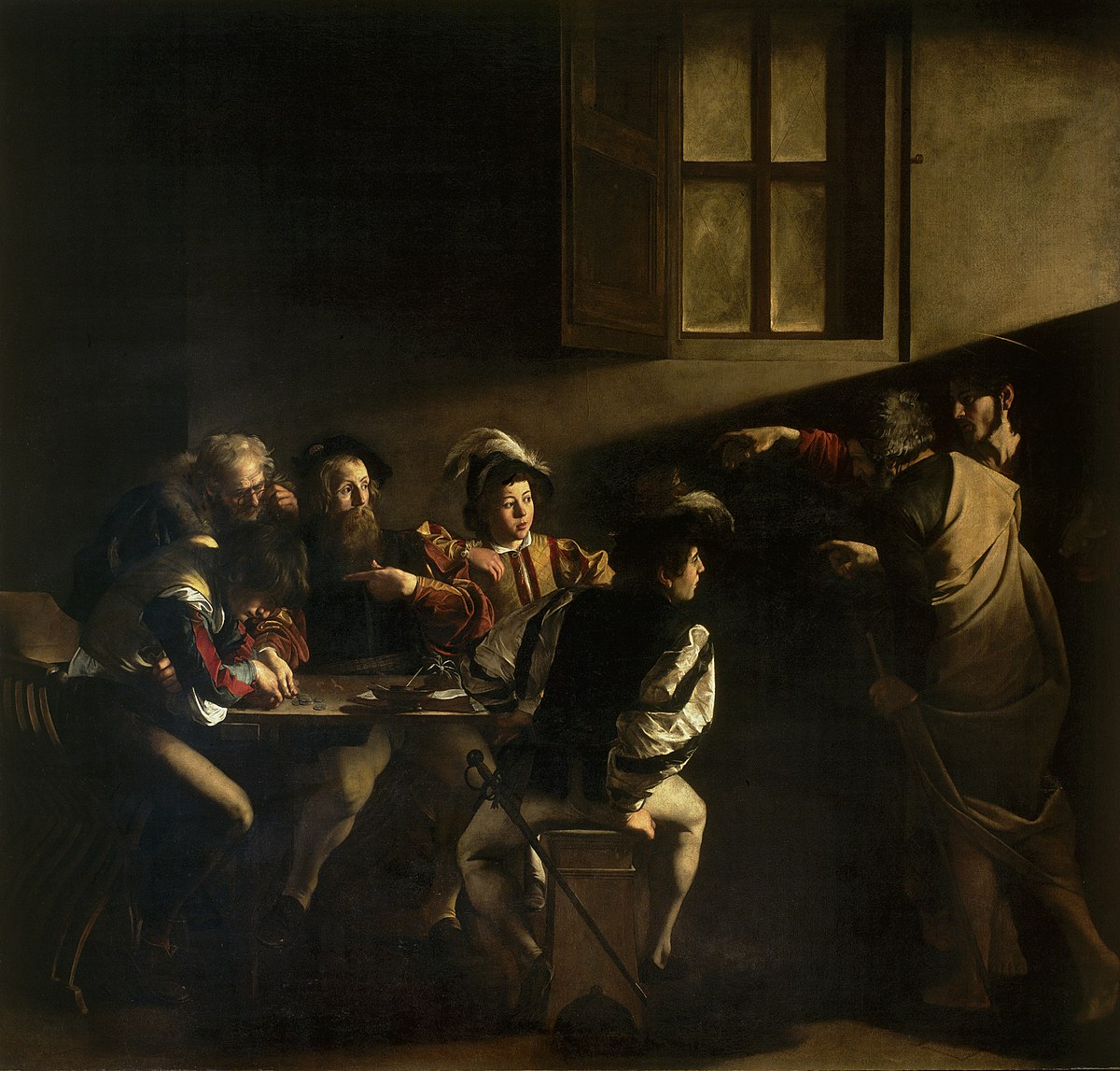
Calling of St. Matthew (use & facts)
comissioned for a chapel
extreme naturalism & intense value contrasts with hard-edged painting style
creates moment of drama
tenebrism
Caravaggio paints poor people
hand reminiscent of God from Creation of Adam
pictures moment of conversion
drama from use of light & shadow & quality of immediacy
figures engulfed by shadow & beaming light highlighting St. Matthew
use of vivid colors, bold contrast of reds, gold, greens & textures of velvet & fur
contrast of gestures & expressions
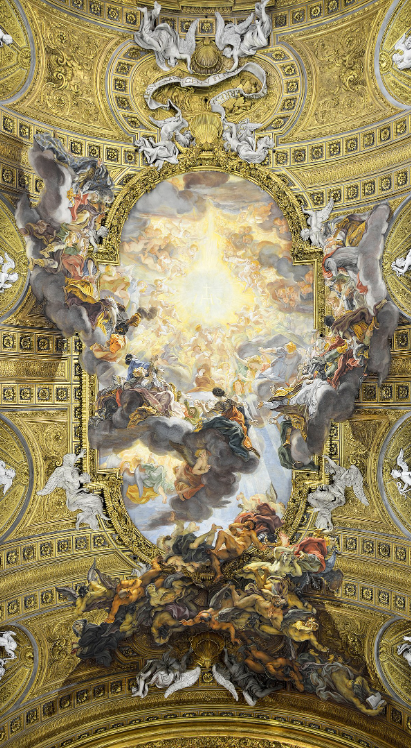
Triumph in the Name of Jesus
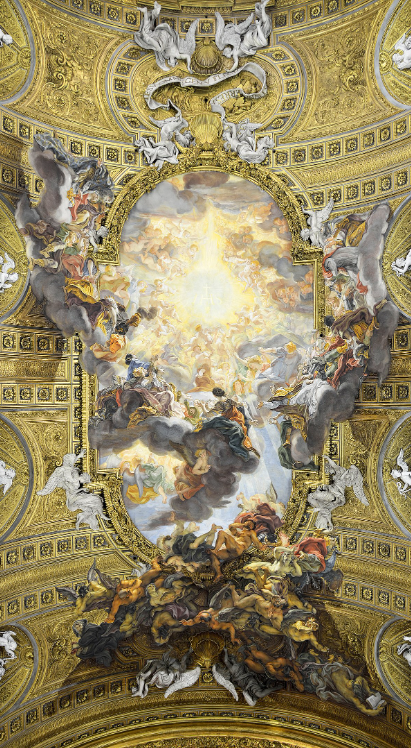
Triumph in the Name of Jesus (creator & date)
Giovanni Battista Gaulli; 1568-1584 CE
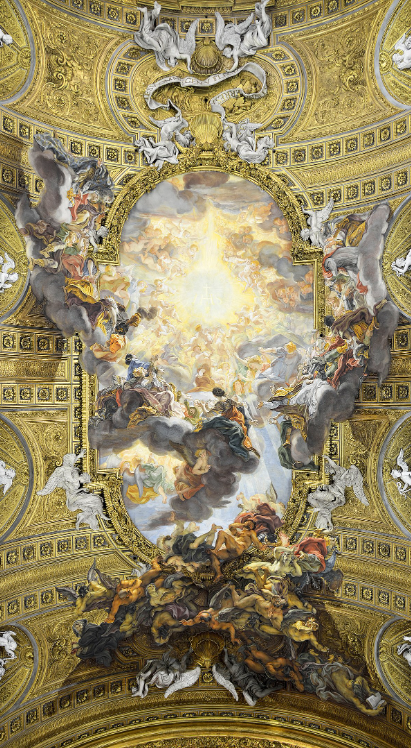
Triumph in the Name of Jesus (culture, location, & material)
Italian Baroque; Rome, Italy; Fresco painting & stucco molding
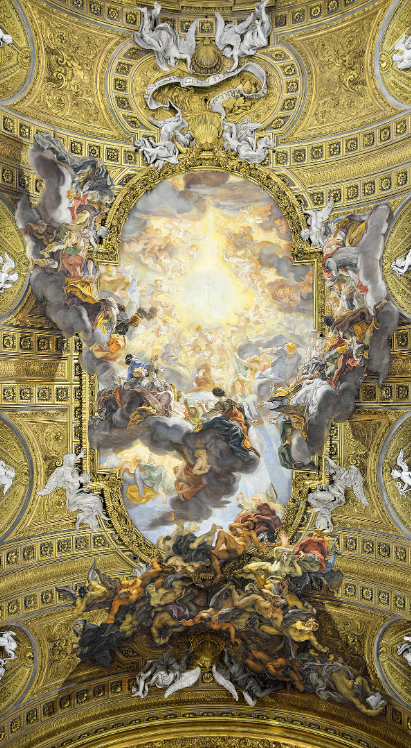
Triumph in the Name of Jesus (use & facts)
Church
expresses emotional drama using asymmetrical compositions focused on diagonals & contrast of light & dark
strongly modeled forms created from light & dark contrasting values (drama)
mother of Church of Jesuits in Rome
paradigm of Counter-Reformation
mannerist exterior with tympanum & pediment
Jesus portrayed as INH in bright sun
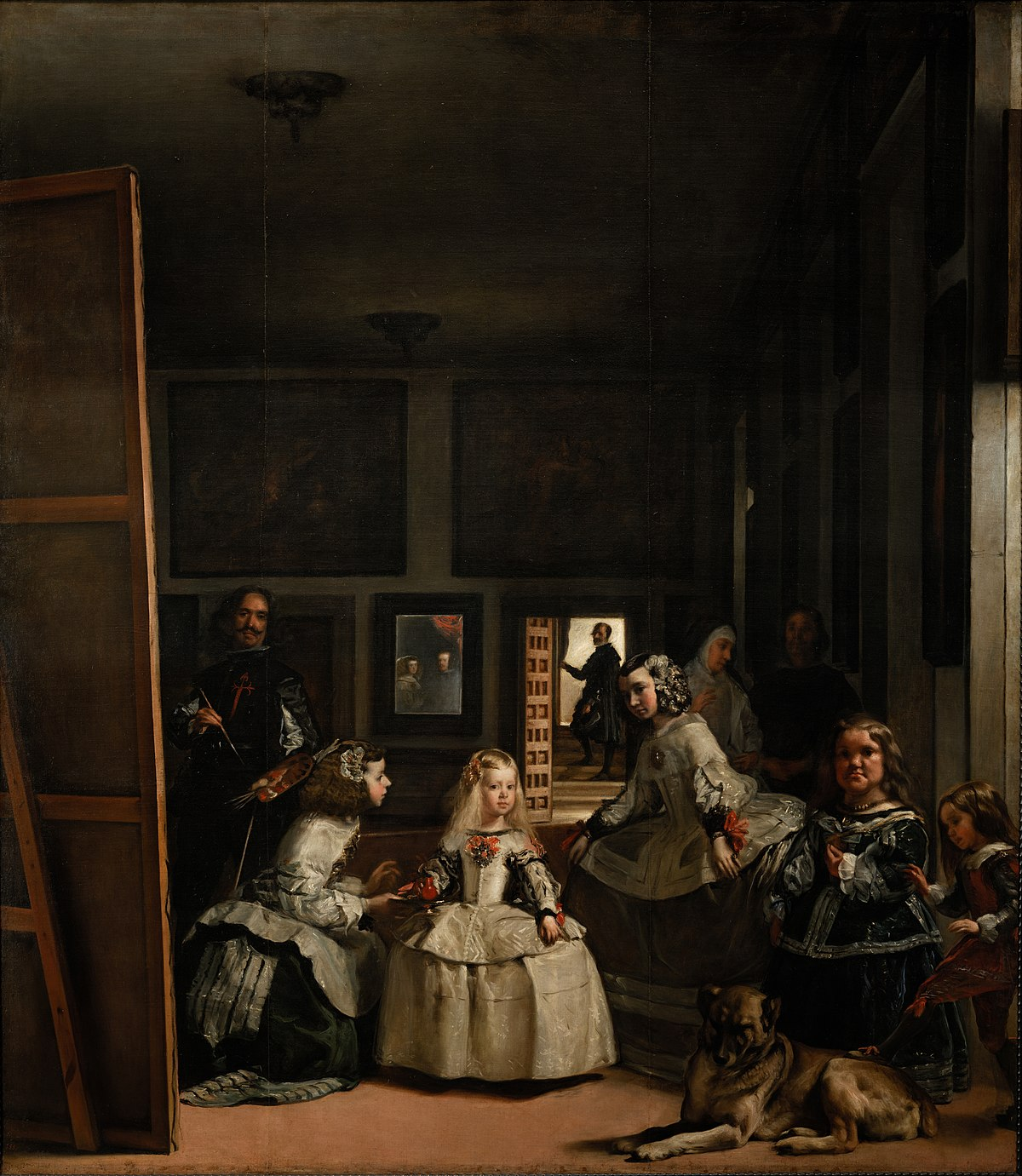
Las Meninas

Las Meninas (creator & date)
Diego Velasquez; 1656 CE
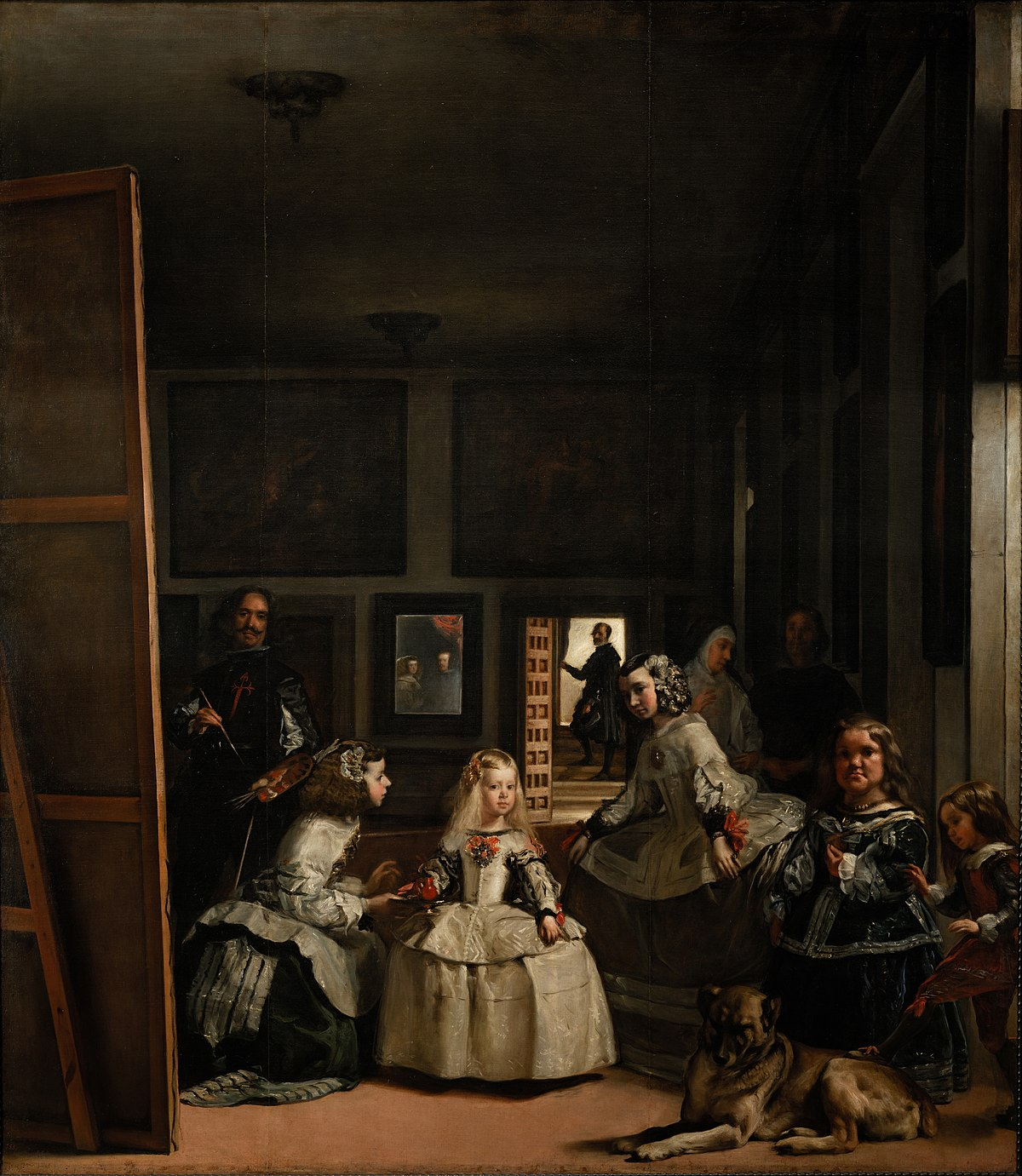
Las Meninas (culture, location, & material)
Spanish Baroque; Madrid, Spain; Oil on canvas
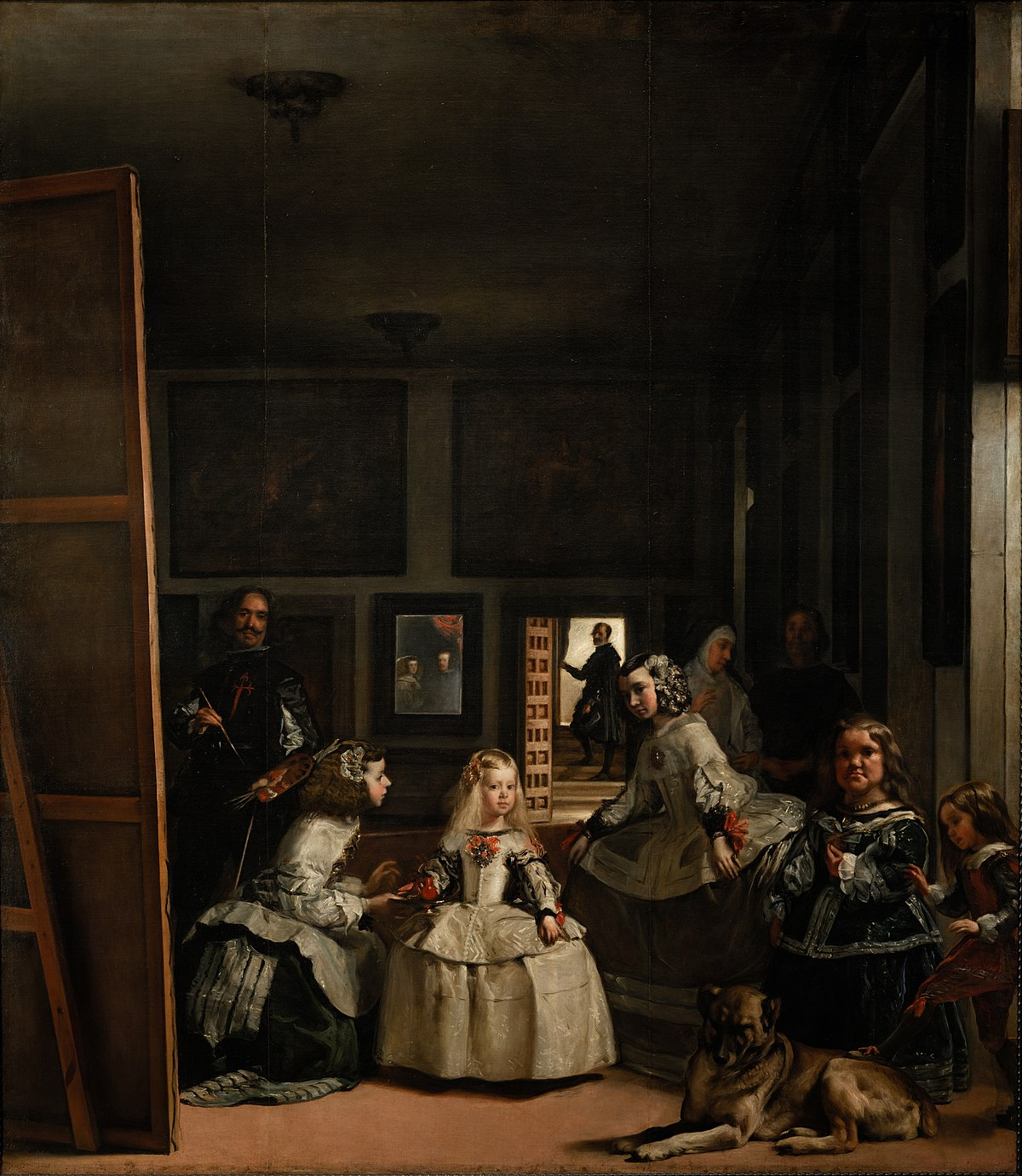
Las MeninasLas Meninas (use & facts)
Enhance status of the artist
portrait of Margarita, self portrait of artist, portrait of King & Queen in mirror
mix of everyday subject matter & royalty
presence of mirror suggests viewer is seeing perspective of Spanish King & Queen
no focal point
viewer bought into scene bc figures observing him/her

Henri IV Recieves the Portrati of Marie de Medici
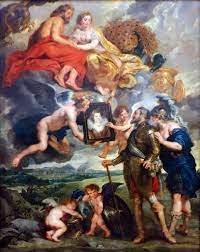
Henri IV Recieves the Portrati of Marie de Medici (creator & date)
Peter Paul Rubens; 1622 CE
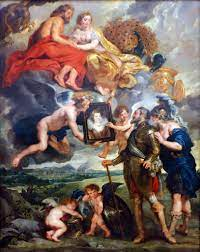
Henri IV Recieves the Portrati of Marie de Medici (culture, location, & material)
French Baroque; Paris, France; Oil on canvas
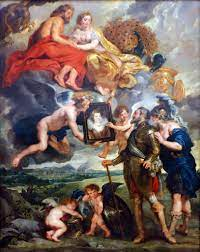
Henri IV Recieves the Portrati of Marie de Medici (use & facts)
Comissioned by Marie de Medici to rehabilitate her reputation post-exile
expresses emotional drama using asymmetrical compositions focused on diagonals & contrast of light & dark
strongly modeled forms created from light & dark contrasting values (drama)
Marie in jeweled dress & stiff lace collar, with confident gaze
ancient gods of marriage & love (Hymen & Cupid, Jupiter & Juno) & portrait presented to Henry IV (King of France)
symbolism
eagle, peacock, flaming torch, pink silk ribbon, yoke shaped garland
painting about politics
personification of France (blue robe) tells Henry marriage to Marie is a good idea & domestic matters are more important than military
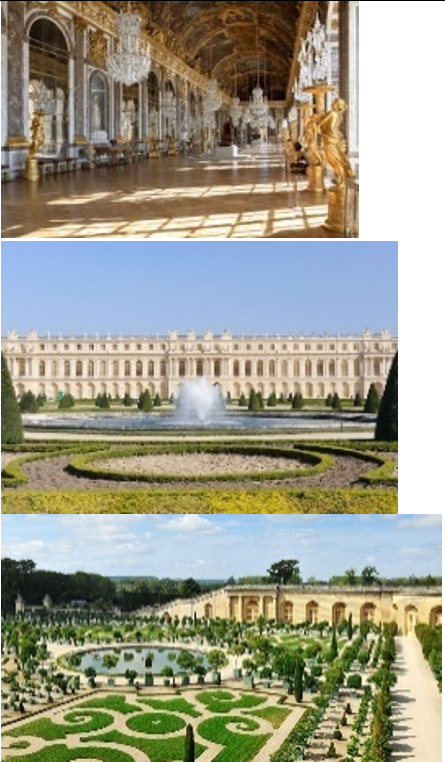
Palace of Versailles
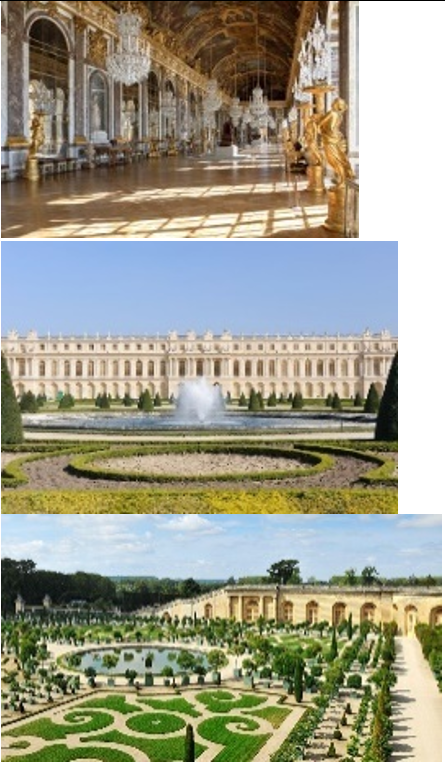
Palace of Versailles (creators & date)
Louis Le Vau & Jules-Hardouin Mansart
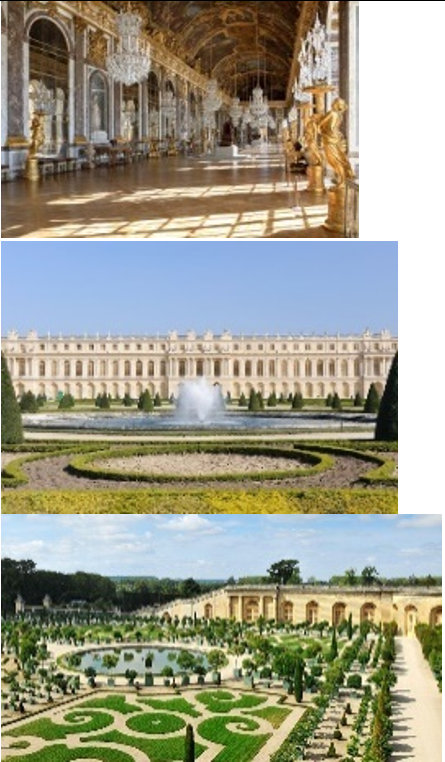
Palace of Versailles (culture, location, & materials)
French Baroque; Paris, France; Red brick, white stone…
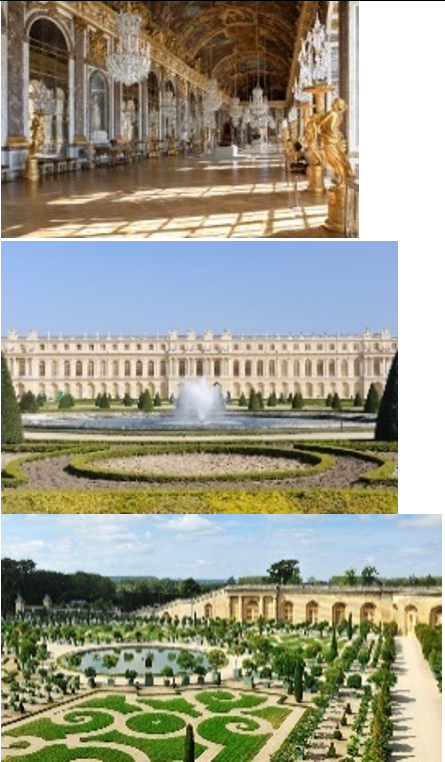
Palace of Versailles (use & facts)
palace
palace of Louis XIV who moved whole court to Versailles for control
everything glorifies the “Sun King”
façade & garden are geometric
King Louis bedroom is in the center & everything radiates from there
represents his political ambition
Hall of Mirrors: barrel vaulted ceiling, natural light, one side all mirrors, gold leaf, Louis portrayed as civic & military hero
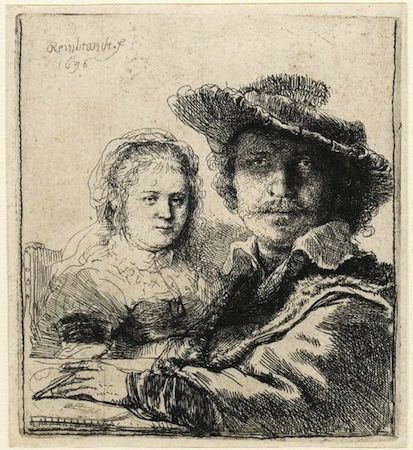
Self Portrait with Saskia
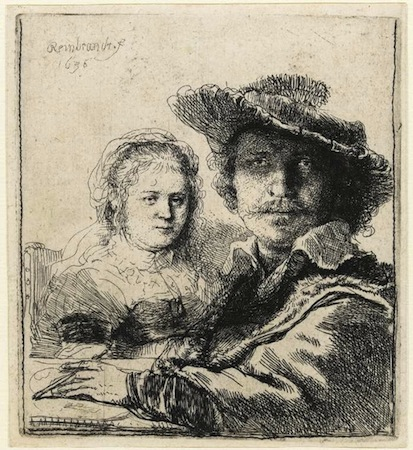
Self Portrait with Saskia (creator & date)
Rembrandt Van Rijn; 1636 CE
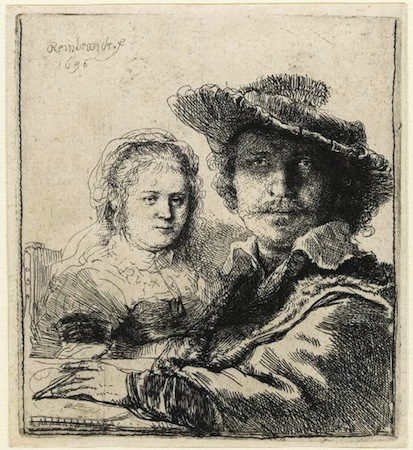
Self Portrait with Saskia (culture, location, material)
Northern (Dutch) Baroque; Amsterdam, Netherlands; Etching (acid on copper plate)
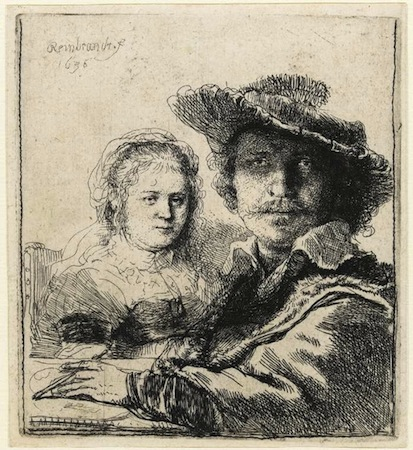
Self Portrait with Saskia (use & facts)
practice artistic technique & function as a marriage portrait
shows himself doing his craft (etching or drawing)
produced 75 self portraits
portrayed himself in a variety of different imagined roles (soldier, beggar, courtier, Oriental leader)
one of the only works that shows him drawing
the woman is his wife Saskia with a veil
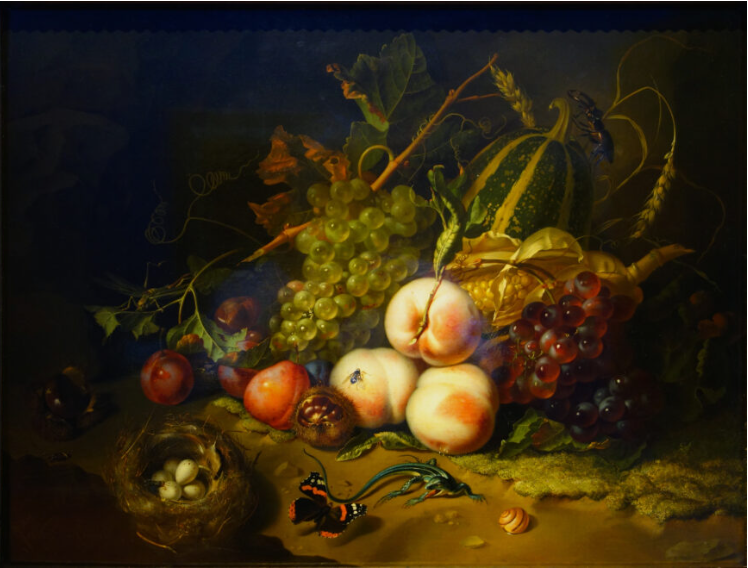
Fruit and Insects
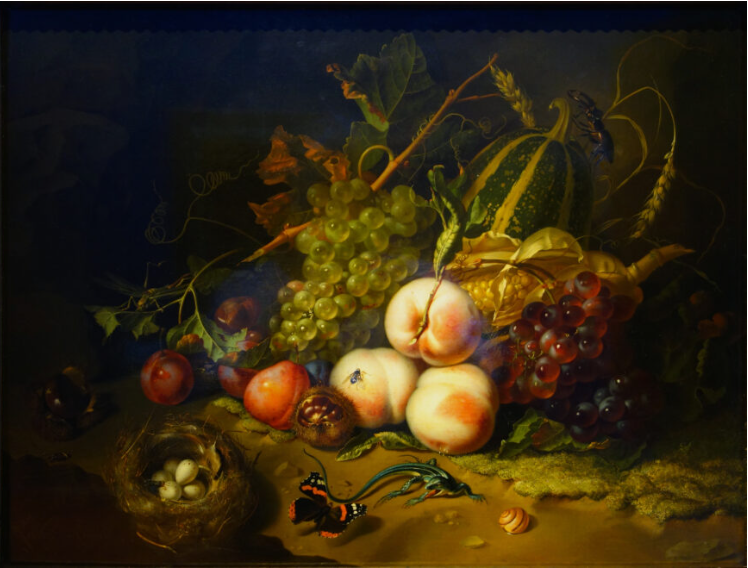
Fruit and Insects (creator & date)
Rachel Ruysch; 1711 CE
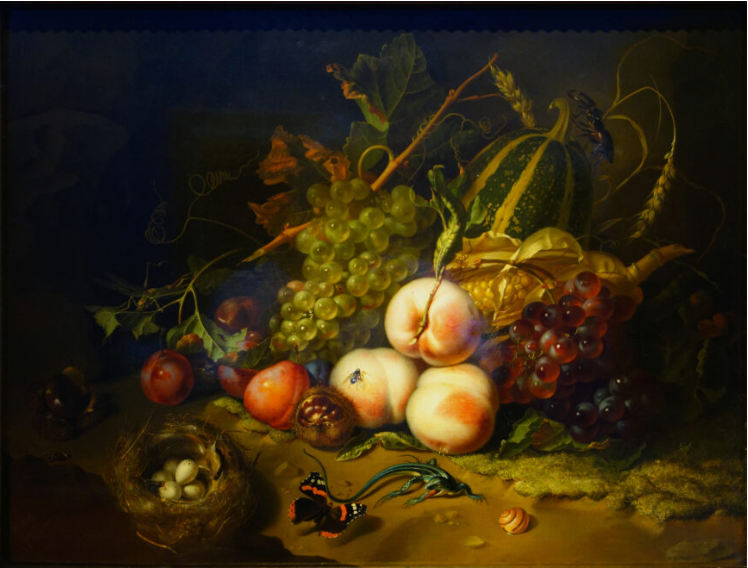
Fruit and Insects (culture, location, & material)
Northern (Dutch) Baroque; Netherlands; Oil on wood
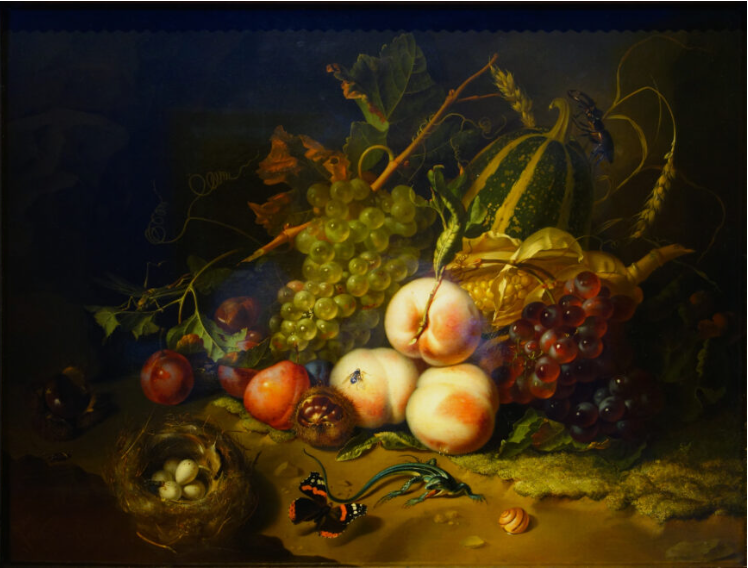
Fruit and Insects (use & facts)
comissioned for the Duke of Tuscany (her father in law)
vanitas – moral message from the bible that beauty is fleeting
still life flowers
studied her fathers botany books
celebrated beauty & luxury but warned about fleeting nature of life
in her works flowers wilt & die & insects have eaten holes in leaves
one of the few successful female Baroque era (court artist in Bavaria for 8 years)
reminds Dutch are not attached to worldly possessions
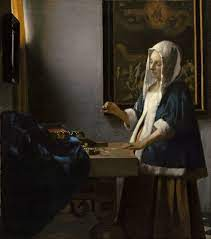
Woman Holding a Balance
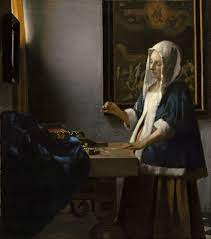
Woman Holding a Balance (creator & date)
Jan Vermeer; 1664 CE
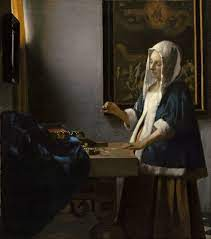
Woman Holding a Balance (culture, location, & material)
Dutch Baroque; Delft, Netherlands; Oil on canvas
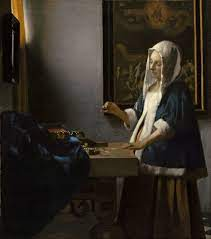
Woman Holding a Balance (use & facts)
Spread moral message to middle class audience
Vermeer was a Catholic (Counter-Reformation)
light coming in from side
picture of Last Judgement on wall
symbolic of weighing life choices & warning against being attached to worldly riches
lots of trade objects
Dutch tradition of painting everyday objects with hidden Christian meaning
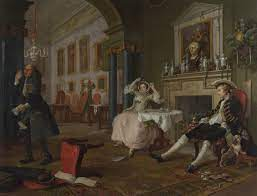
Tete a Tete from Marriage a la Mode
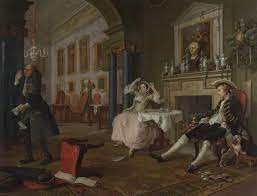
Tete a Tete from Marriage a la Mode (creator & date)
William Hogarth; 1743 CE
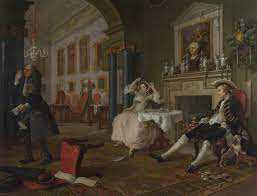
Tete a Tete from Marriage a la Mode (culture, location, & material)
English Rococo; London, England; Oil on canvas
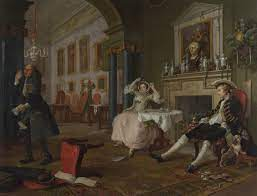
Tete a Tete from Marriage a la Mode (use & facts)
satrisizing the upper class, appealing to middle class audience
subject is disasterous marriage between a Viscount & merchant’s daughter
tired & loose wife appears to have card party & husband returns to expensive & disorderly house from a brothel (dog with woman’s cap) & steward carrying bills
decoration of room comments on the action
picture over mantelpiece shows Cupid among ruins, in front is a bust with broken nose (impotence)
audience was middle class who bought etchings of this painting, but could not afford the actual thing
moral message = when you marry for money it ends badly/you don’t treat it as a marriage
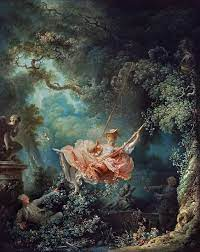
The Swing
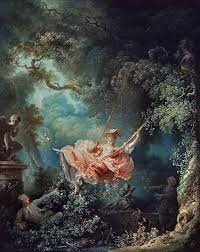
The Swing (creator & date)
Jean-Honore Fragonard; 1767 CE
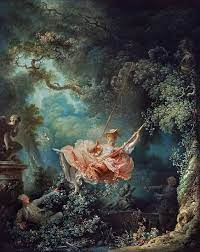
The Swing (culture, location, & material)
French Rococo; London, England; Oil on canvas
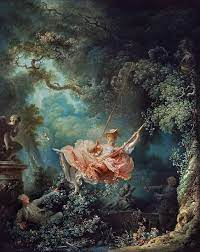
The Swing (use & facts)
Garnered towards aristocratic audience for a patron
rococo: fluffy, over the top, pastels
figures surrounded by lush overgrown garden, sculptured figure saying “hush” (naughty secret), background with two cupid figures
pastels & movement with prominent diagonal line
lacks seriousness of Baroque work
two lovers conspired to get an older fellow to push young lady on swing while lover hides in bushes & looks up her dress
full of symbols & window into historical moment
swing is frivolity, shoe in air is decadence (loose woman), bonnet refers to country ideal created by Marie Antoinette
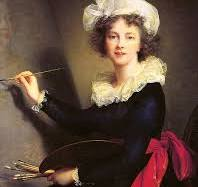
Self Portrait
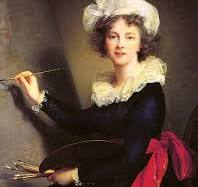
Self Portrait (creator & date)
Elizabeth Vigee-LeBrun; 1790 CE
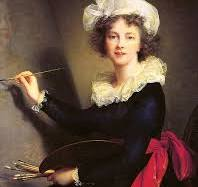
Self Portrait (culture, location, & material)
French Rococo; Rome, Italy, Oil on canvas
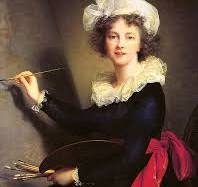
Self Portrait (use & facts)
Resume of her work showing her prowess as a painter
favorite portraits of Marie Antoinette & studied at Royal Academy of Art (post revolution fled to Italy)
in this she is painting the queen
left France bc of revolution (supporter of aristocracy)
painted this portrait during her exile
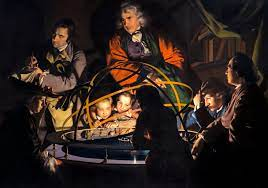
A Philosopher Giving a Lecture on the Orrery
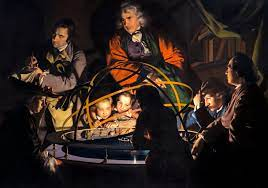
A Philosopher Giving a Lecture on the Orrery (creator & date)
Joseph Wright of Derby; 1763 CE
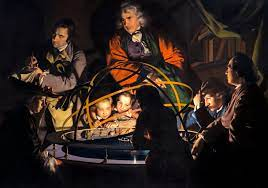
A Philosopher Giving a Lecture on the Orrery (culture, location, & material)
English Rococo; Derby, England; Oil on canvas
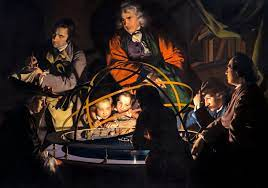
A Philosopher Giving a Lecture on the Orrery (use & facts)
depict Enlightenment ideals of advancing science & technology
depicts awe at scientific miracles
defies genres set from Royal Academies (conversation piece)
uses light much like Caravaggio
orrery = mechanical universe (lamp = sun)
challenges the rigid genres set by the French (Church subjects are best)
solemn atmosphere & not a portrait bc the focus is science
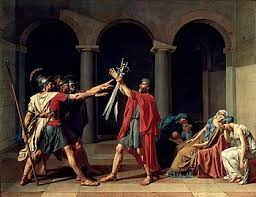
Oath of the Horatii
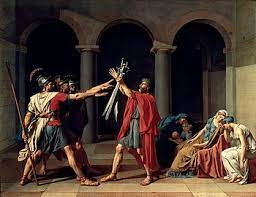
Oath of the Horatii (creator & date)
Jaques-Louis David; 1786 CE
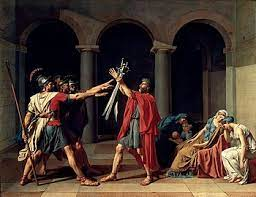
Oath of the Horatii (culture, location, & material)
French Neoclassicism; Rome, Italy; Oil on canvas
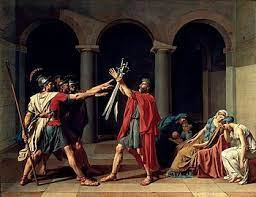
Oath of the Horatii (use & facts)
comissioned by the King, later became call to arms for French Revolution
red color directs the eye
clarity & simplicity of depiction adds to immediacy
simple background, focus on swords
allegorical: used Ancient Roman subject matter to show parallel with contemporary French politics
painting is manifesto of neo-classicism (subject & style)
women are from Horatii family or rival family mourning the inevitable death to follow
painted as part of a salon
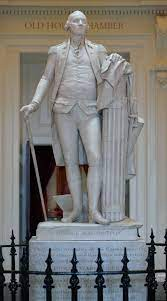
George Washington
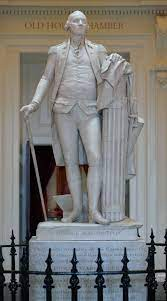
George Washington (creator & date)
Jean-Antoine Houdon; 1788-1792 CE
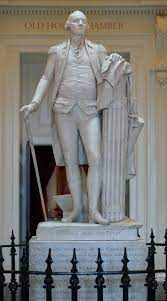
George Washington (culture, location, & material)
French Neoclassicism; Paris, France; marble
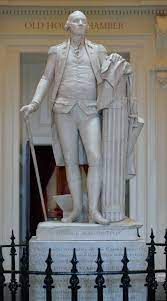
George Washington (use & facts)
Comissioned by Thomas Jefferson as decor for the Virginia Capitol building
made from plaster cast of Washington’s face
depicted with a mix of Neoclassical idealism & down to earth naturalism (American ideal)
plow behind, leaning on fasces (symbol of Roman civil authority), sword out of reach, holding walking stick (retirement from military)
Greek contrapposto
Founding Fathers like Greek democratic ideals
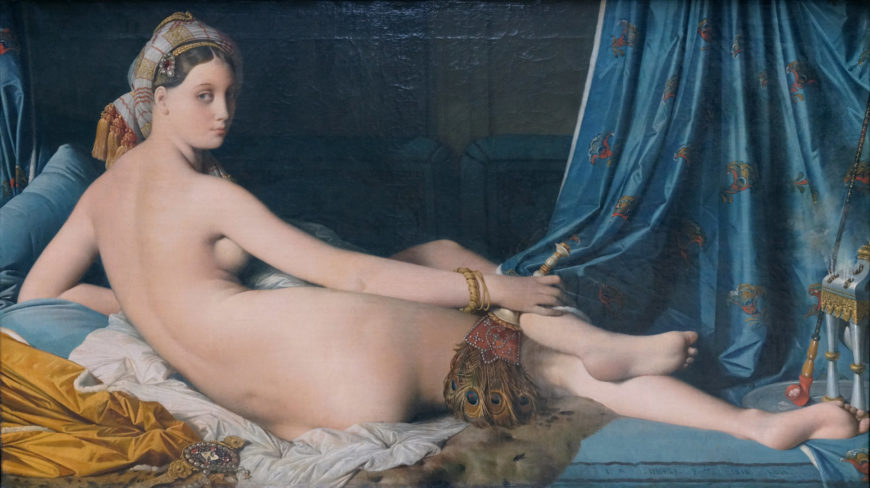
Grande Odalisque
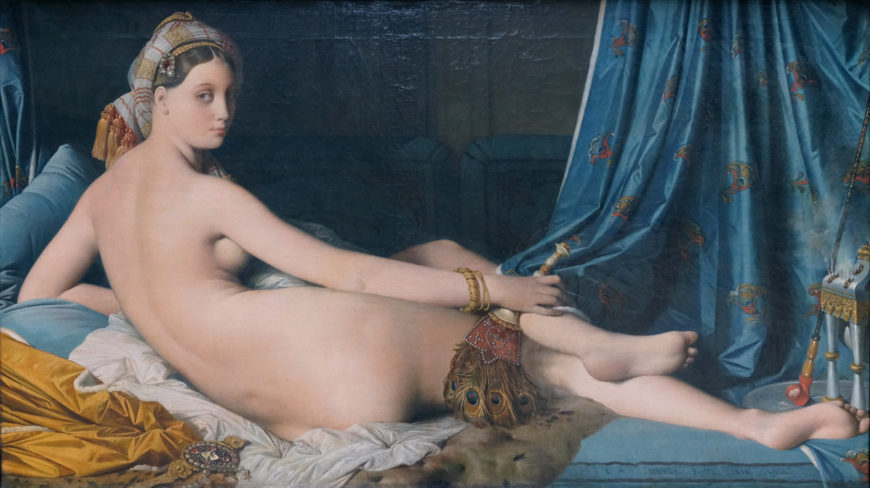
Grande Odalisque (creator & date)
Jean August Dominique Ingres; 1814 CE
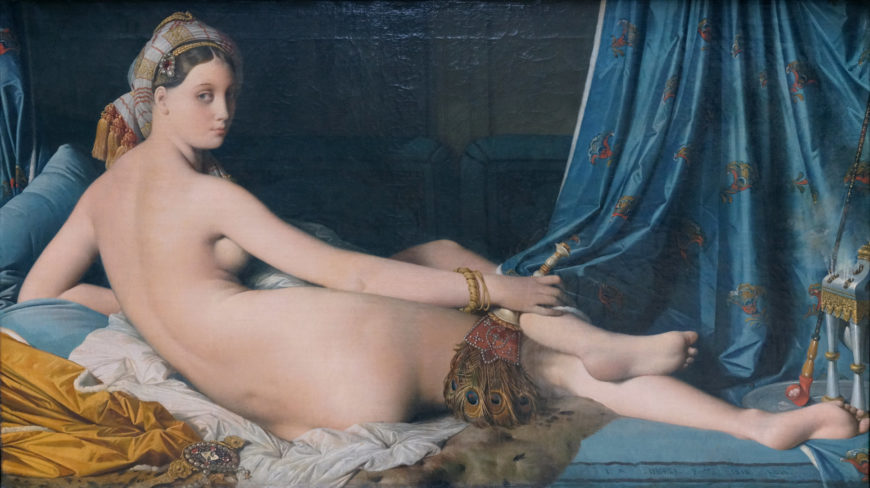
Grande Odalisque (culture, location, & material)
French Neoclassicism/Romanticism; Paris, France; Oil on canvas
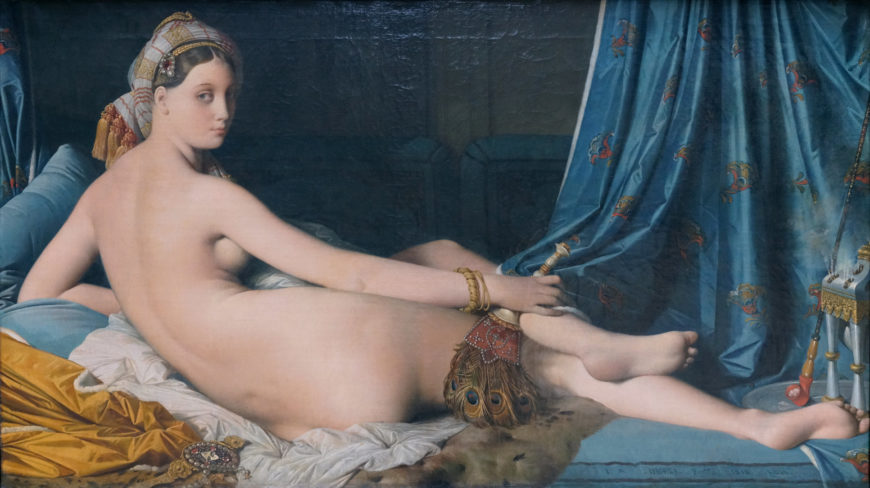
Grande Odalisque (use & facts)
painted for display in a salon
inspired by Renaissance nudes but also Turkish harems (seen bc of French expanding colonialism)
supposed to look “exotic” (headpiece & fan)
seductive look
rejected from salon
too many vertebrae
transition from Neoclassicism to Romanticism
testament to colonialism – viewed colonized as exotic & less civilized
attracted wide criticism when first shown
renowned for elongated proportions & lack of anatomical realism
orientalism
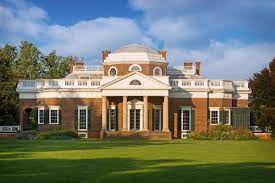
Monticello
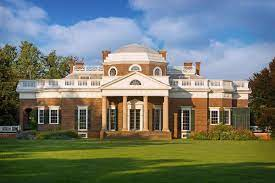
Monticello (creator & date)
Thomas Jefferson; 1768-1809 CE
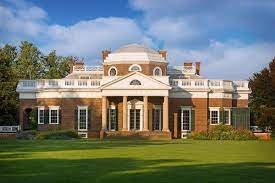
Monticello (culture, location, & material)
US Neoclassical; Charlottesville, Virginia, USA; Limestone, stone, & brick
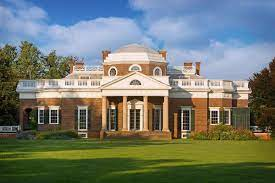
Monticello (use & facts)
house
Jefferson called it an “essay in architecture” & he was a renaissance man (philosophy, archaeology, linguistics, music, botany, bird watching, pasta making)
Jefferson drafted blueprints for the mansion & gardens with no formal training, but extensive reading on Rome & Italian Renaissance architecture
unique in design & use of local resources (brick, nails, lumber, stone, & limestone all manufactured on site)
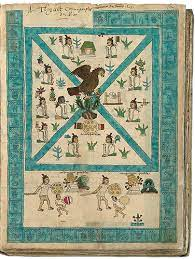
Frontpiece of the Codex Mendoza
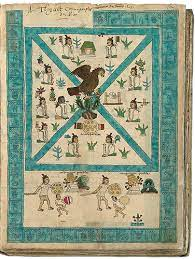
Frontpiece of the Codex Mendoza (creator & date)
Viceroy of New Spain, Indigenous painters; 1541 CE
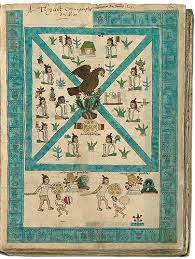
Frontpiece of the Codex Mendoza (culture, location, & material)
Spanish Colonial; Viceroyalty of New Spain (Mexico); pigment on paper
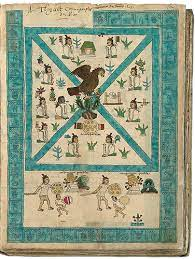
Frontpiece of the Codex Mendoza (use & facts)
preserves history of Aztec people
created by native scribes under supervision of Catholic missionary priests (who annotated it in Spanish)
patron was Antionio Mendoza to be sent to King Charlies V of Spain, but stolen by pirates & sold in France
eagle on cactus refers to founding Aztec myth, shield tells how land was conquered, agricultural symbols & band around edge showing calendar of Aztec history
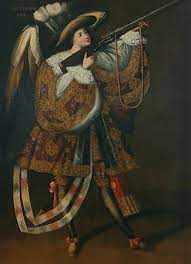
Angel with Arquebus, Asiel Timor Dei
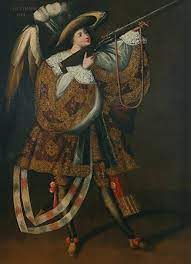
Angel with Arquebus, Asiel Timor Dei (creator & date)
Master of Calamarca; 17th century CE
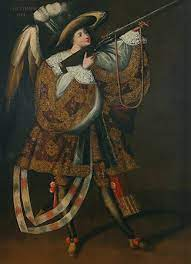
Angel with Arquebus, Asiel Timor Dei (culture, location, & material)
Baroque Spanish Colonial; Viceroyalty of Peru (Bolivia); Oil on canvas & guilding
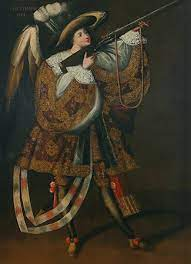
Angel with Arquebus, Asiel Timor Dei (use & facts)
Symbol of power of Spanish over Indigenous & protection of Catholics
angel outlawed in Council of Trent (1545)
name of angel is “Asiel Timor Dei” (fears God) & he is wearing aristocratic European dress, conqueror of Indigenous faiths
symbol of Counter-Reformation, war on Protestantism
took place of native deities so clothing & feathers imitate that of Indigenous Andean noblemen
exclusively American
androgynous nature, depicted using extended lines of Mannerist style (preferred in 17th century America)
gun shows militaristic ideology of Catholic Church & represents power of Spanish over indigenous people

Screen with Siege of Belgrade and Hunting Scene
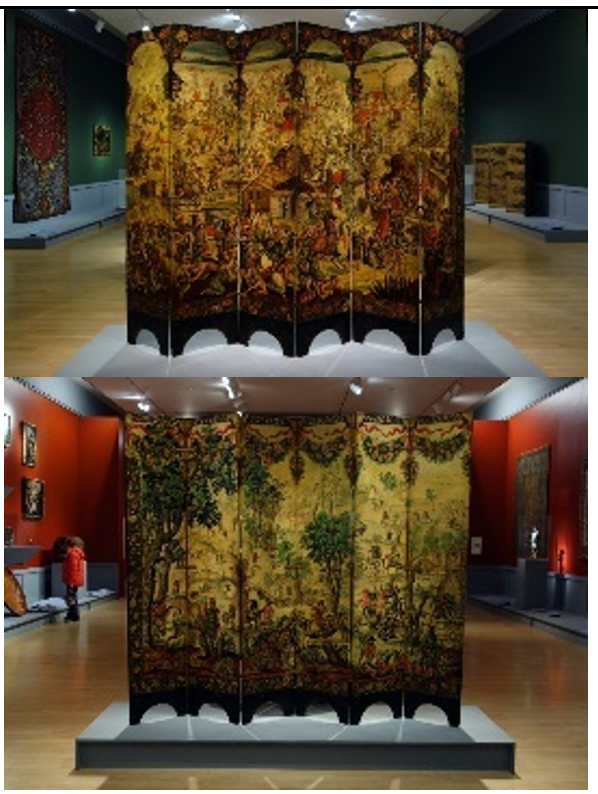
Screen with Siege of Belgrade and Hunting Scene (creator & date)
Circle of Gonzales Family; 1697-1701 CE
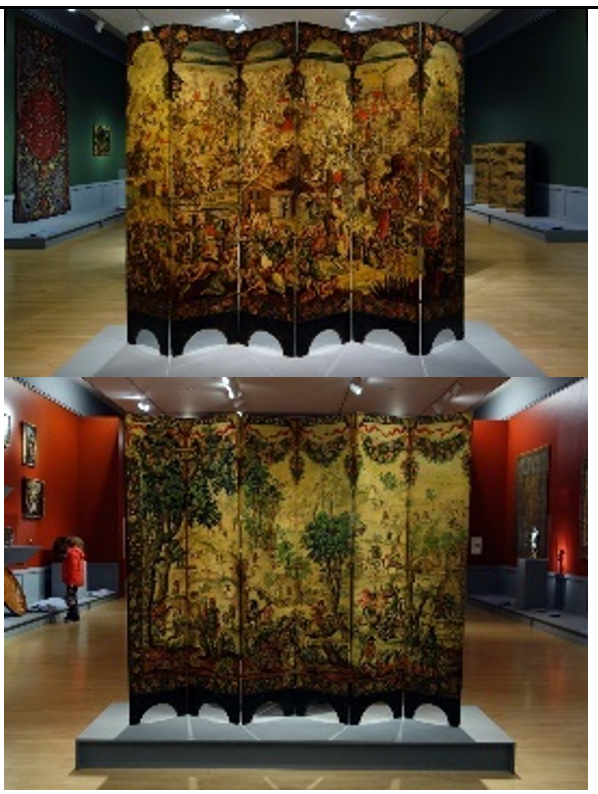
Screen with Siege of Belgrade and Hunting Scene (culture, location, & material)
Spanish Colonial; Mexico; resin & oil on wood inlaid with mother of pearl
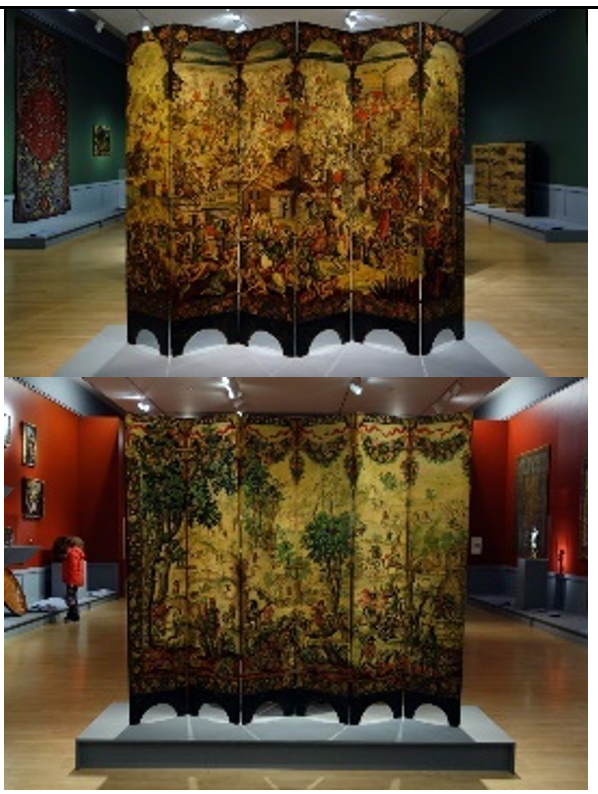
Screen with Siege of Belgrade and Hunting Scene (use & facts)
for display, depicts Hapsburg power & allegiance of New Spain to their Hapsburg King
screen = biombo
enconchado – inlaid shell painting
commissioned in Mexico City by viceroy of New Spain & displayed in Mexico’s vice-regal balance
combines European & Japanese styles with Mexican techniques & history of a recent Hapsburg battle victory in Serbia
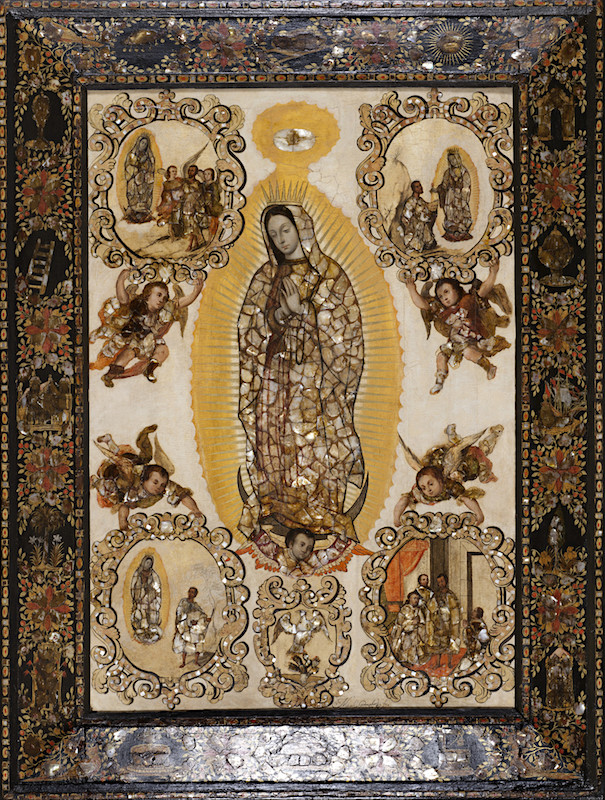
Virgin of Guadalupe
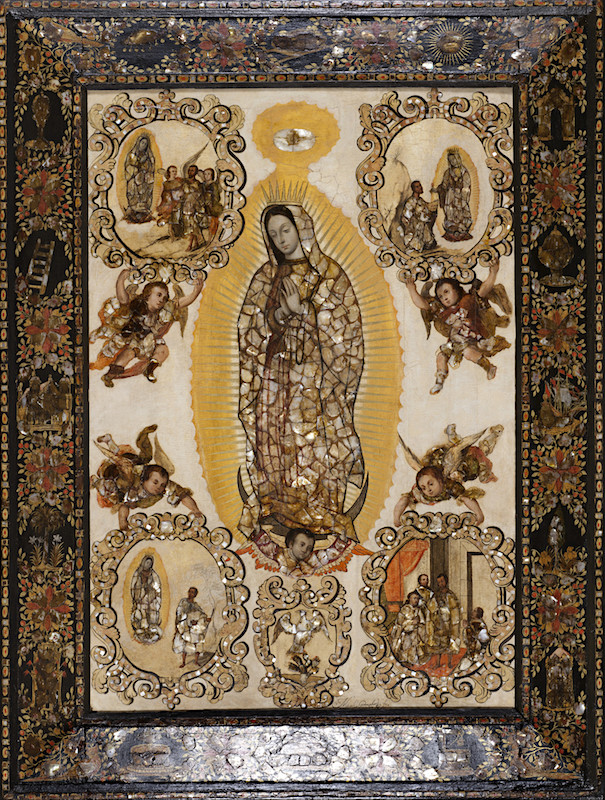
Virgin of Guadalupe (creator & date)
Miguel Gonzalez; 1698 CE
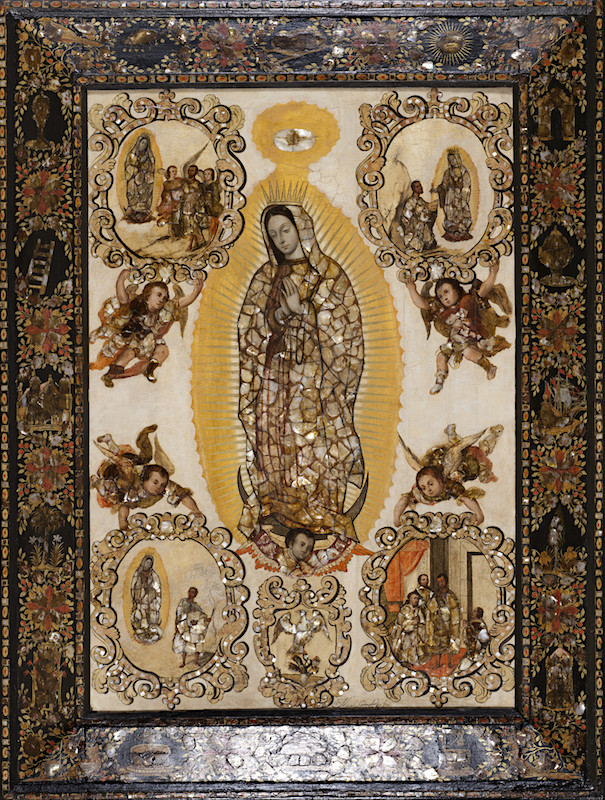
Virgin of Guadalupe (culture, location, & materials)
Spanish Colonial; New Spain (Mexico City, Mexico); Oil on canvas with on wood with inlaid mother of pearl
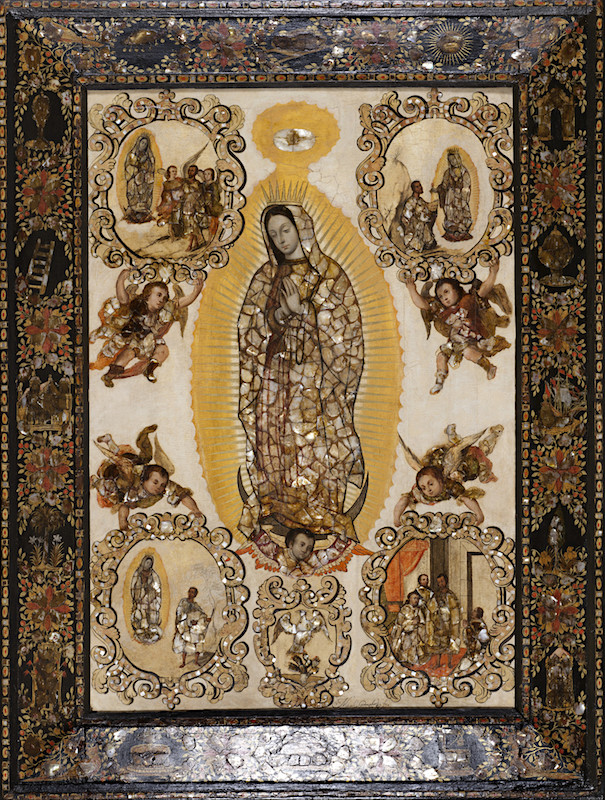
Virgin of Guadalupe (use & facts)
Symbol of the people of New Spain (especially creoles & indigenous)
enconchado (inlaid shell paintings with illuminate work when light catches)
depicts Mary appearing to Juan Diego
Mary as mother of Central American natives
original image enshrined on Juan Diego’s tilma
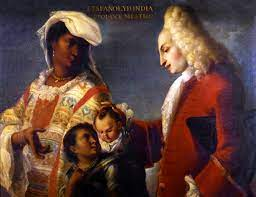
Spaniard and Indian Create a Mestizo
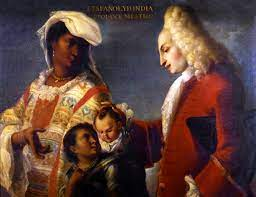
Spaniard and Indian Create a Mestizo (creator & date)
Juan Rodriguez Juarez; 1715 CE
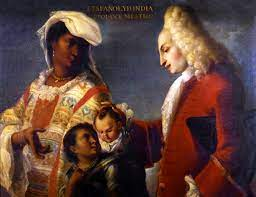
Spaniard and Indian Create a Mestizo (culture, location, & materials)
Spanish Baroque; New Spain (Mexico); Oil on canvas
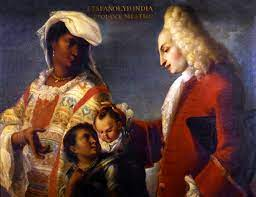
Spaniard and Indian Create a Mestizo (use & facts)
casta painting
“pintura de casta” = caste paintings showing racial intermixing common in Mexico
modeled on Holy Family
implication is that Europeans are of higher social order
commissioned by elites who saw this as a scientific investigations or warnings
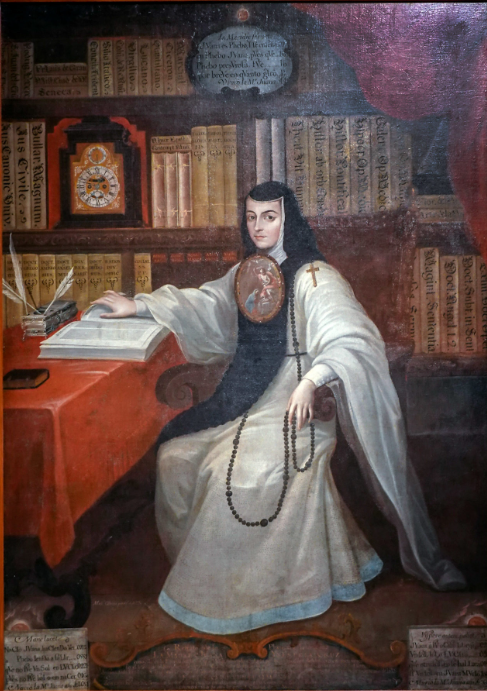
Sor Juana Inez de la Cruz
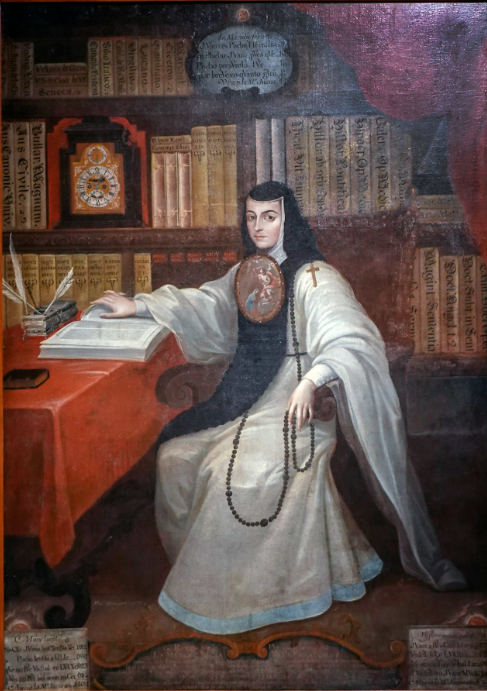
Sor Juana Inez de la Cruz (creator & date)
Miguel Cabrera; 1750 CE
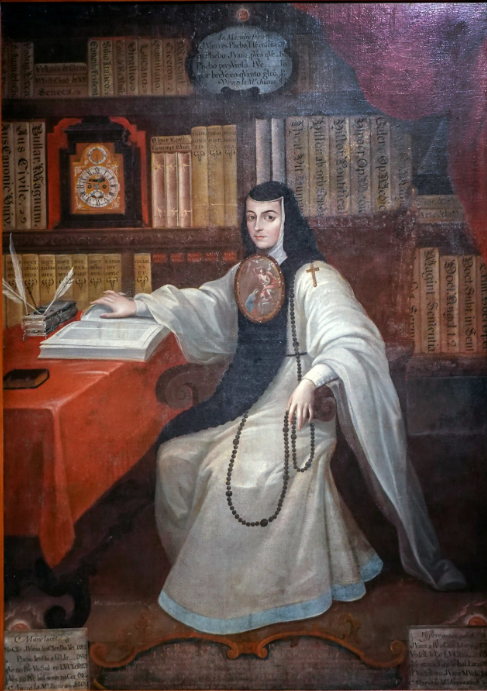
Sor Juana Inez de la Cruz (culture, location, & materials)
Spanish Baroque; New Spain (Mexico); Oil on canvas
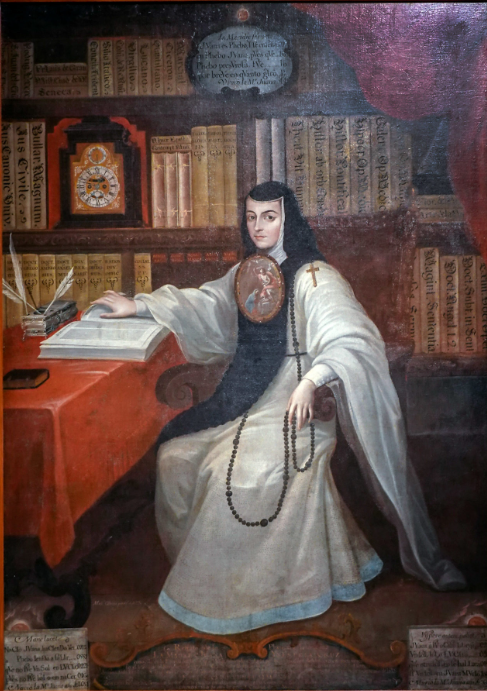
Sor Juana Inez de la Cruz (use & facts)
Comissioned painting
depicts Sor Juana Ines de la Cruz, self-taught scholar of scientific thought, philosopher, & poet of the Baroque in Mexico
a Hieronymite nun of New Spain
lived during Mexico’s colonial period
joined a convent to avoid marriage & wrote poetry & prose dealing with topics like love, feminism, & religion
held gatherings of intellectuals in her residence
she assertively & directly looks toward the viewer, surrounded by her instruments of learning (books)
rosary sign of her religious life
first feminist, critical of misogyny & hypocrisy
girlboss